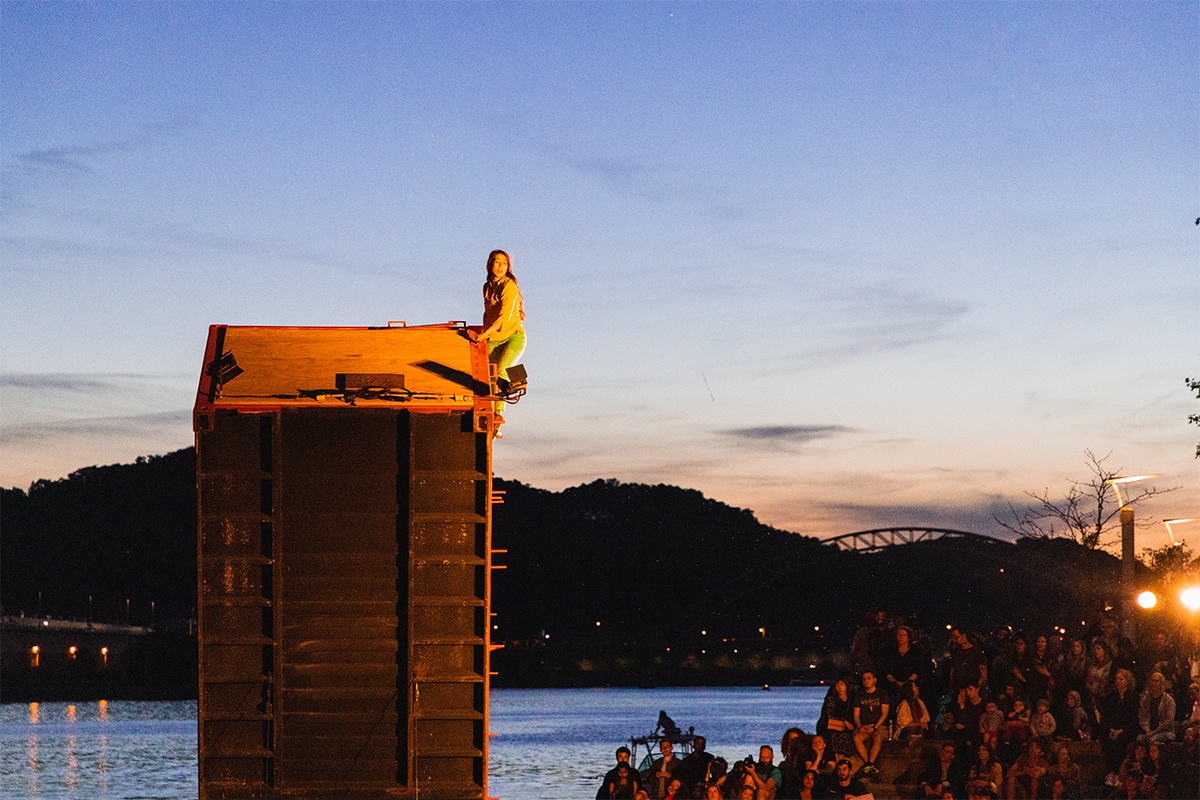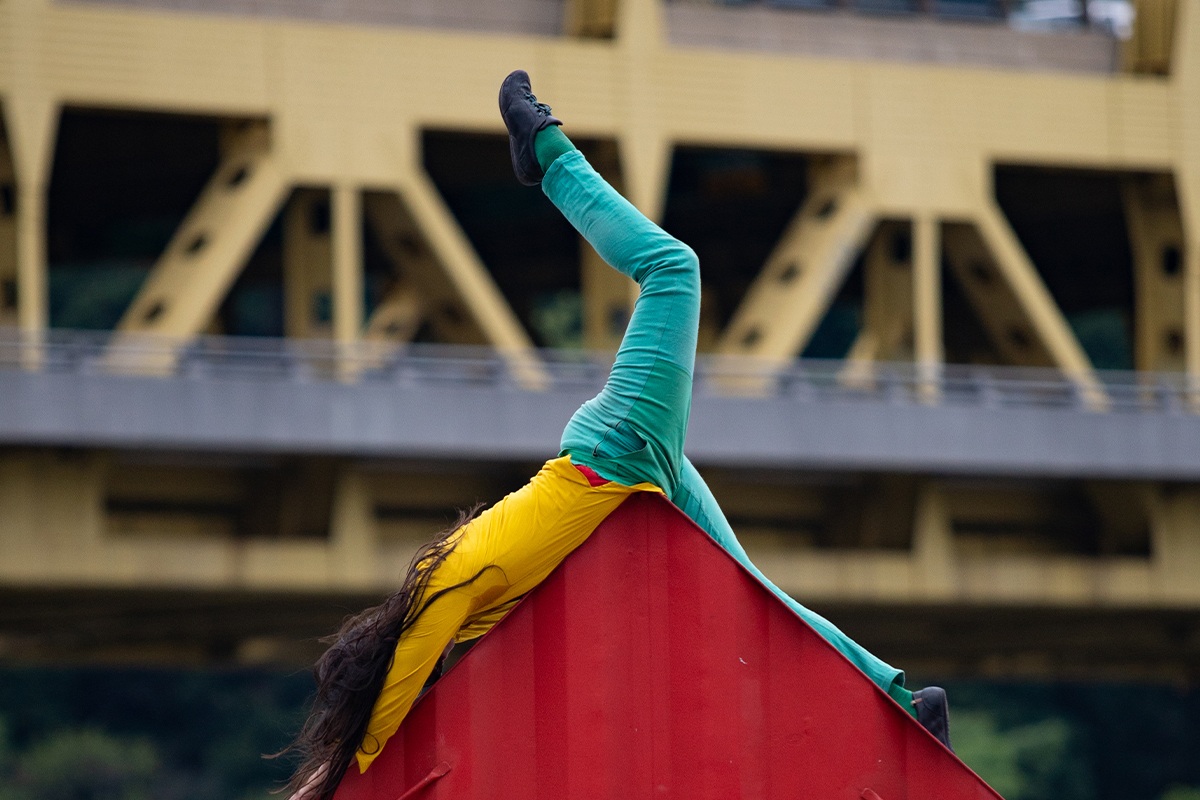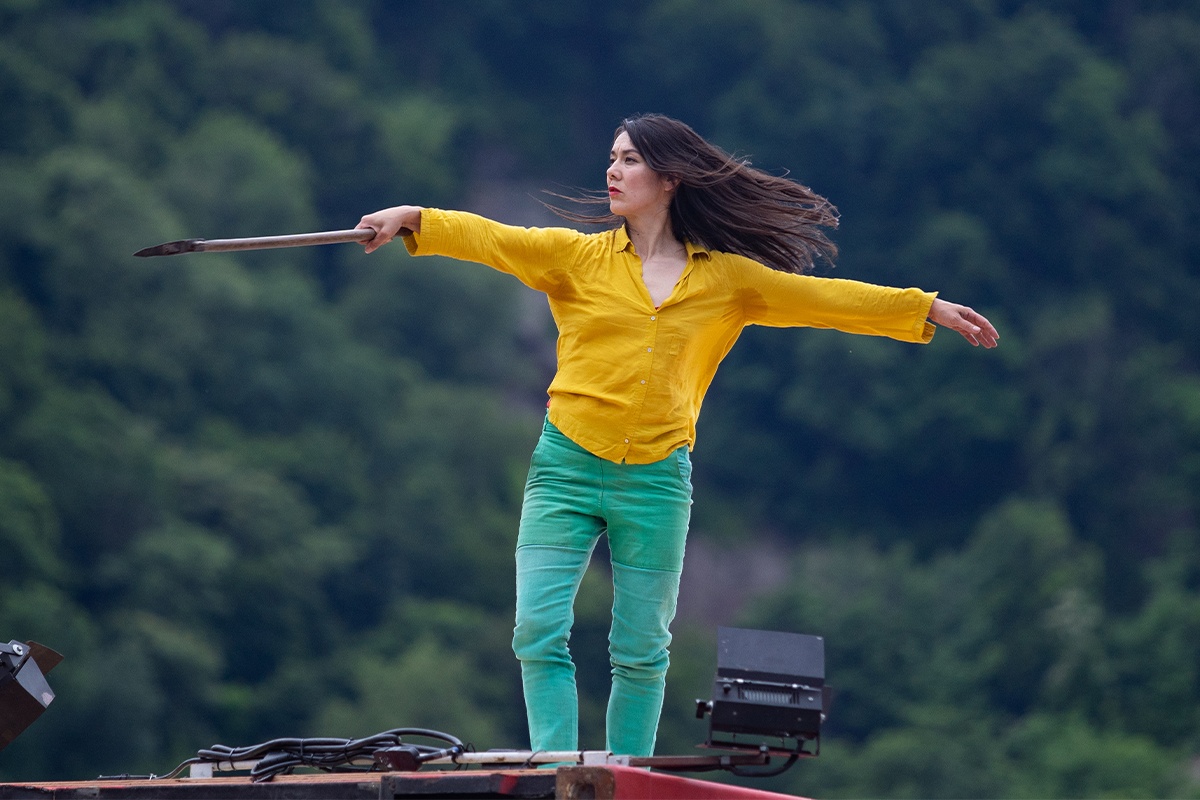During the 60th Anniversary of the Dollar Bank Three Rivers Arts Festival, thousands of Pittsburghers witnessed, for the first time in U.S. history, a spectacle between a dancer and a 40-foot shipping container. The performance, titled Origami, is the dreamchild of Compagnie Furinkaï, comprising of French-based creatives Satchie Noro and Sylvain Ohl.
Situated by the Monongahela River, Satchie circumambulates the shapeshifting container while ambient, esoteric music transports audience members to another world (although according to Satchie and Sylvain, a world more familiar to us than it seems). Climbing, swinging, and dancing along the metal surfaces, Satchie acts in equilibrium with the container, whose different folds drive the next steps in her movements. The 30-minute experience in sum is surreal yet captivating, as human and machine dance to its own unique rhythm. All the while, Pittsburgh’s landscape is also dancing to its own rhythm, the flows of the Monongahela River and variations of the sky painting a new backdrop for every performance set.

Threads of similarity can be drawn between origami and shipping containers. Following paper’s invention and widespread use, origami, the art of paper folding, soon found its way in cultures around the world and became deeply embedded in its traditions. Today, another material is becoming more ubiquitous and culturally relevant than ever - the shipping container. The form, originating from industrial shipping purposes, has most recently been reimagined as housing units, restaurants and even urban storefronts. And so drawing these parallels, Compagnie Furinkaï’ presents a new question:
What if we could fold a container and imagine the creative possibilities that a box can hold?
With this exciting new possibility, Satchie Noro and Sylvain Ohl sat down with us to explain the creative process that evolved into Origami.

Welcome to Pittsburgh, Satchie and Sylvain. What are you looking forward to during your visit here?
Satchie: We were invited to do Origami so we’re just so happy to have this opportunity to present this show [for] the first time in the States. Also, it’s the first time that Origami came by sea to a country...and we’re happy.
How did this idea of using a movable shipping container as part of your performance come about?
Sylvain: It’s a long process. It’s a mix between poetry and industrial walking. I was working on containers and with Satchie, we were working together for years on motion and dance. When Fukushima occurred - there was something wrong with the energy there - I was working on containers to provide the people temporary shelter because there was no housing over there. I was...buying containers from France and just sending them over there to provide houses and working bases for people.
This is really when I started to have reflections on the human body in containers.
In fact, containers are not adapted to the human shape. It’s like living in a long steel pipe. So I started to say, “What can we do about that?” We have to escape the rigorous standards which are imposed to humanity.
And in a way, it’s origami because it’s simple. Just one sheet of paper and you have many many possibilities. Many many containers, many many possibilities.

There’s something beautiful about the way Origami alludes to ideas of tradition and culture, but also to modernity and industrialization. Can you talk more about how these themes inspired your performance?
Sylvain: I would say in any kind of art, going from civilization, you always grab [from] the past the basic knowledge, the history, and you introduce the daily life. So the origami, the old part, is our old reference and new we are doing [something] else. Our old grandfather cannot do origami with containers because it did not exist at the time. But [for] us, we can work with containers and origami is a memory of our culture. That’s the mix between the two. That’s civilization.
Satchi: Personally, my father came from Japan to France in a big freight boat and at that time, 50 years ago, there were no containers. So I decided, just before Origami, to go the way back and I did a movie, a dance movie, from France to Japan to redo the same movement, but now it’s containers [by] boat, so I filmed the dance with containers, so one part of the dance started in this shape [when] going back to Japan.

What message do you hope viewers can take away after seeing Origami?
Sylvain: In Origami, you will see, I hope, the relationship between human and object. It’s with, it’s not versus - Satchi moves with the container. We try to be compatible.
Satchie: It’s also the way we look at landscape. It’s like this performance to try to put this container which is very simple in its shape to enhance the landscape and for me too, it’s like each time the box is opening up I discover a different atmosphere and landscape. It’s not a black box theater and also the relation with the public creates the moment.
Compagnie Furinkai’s Origami showcased at the 2019 Dollar Bank Three Rivers Arts Festival from June 14-16 and was a co-presentation of the Trust’s Pittsburgh Dance Council.
Want to see more contemporary dance? The upcoming Pittsburgh Dance Council 2019-2020 season is currently open for subscriptions. Subscribe Here
